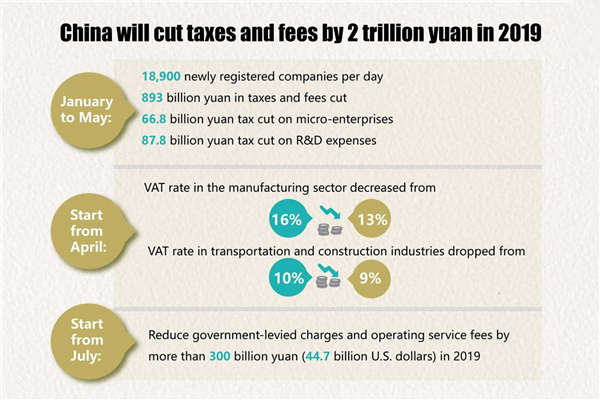Visual psychology in Australian workplaces plays a critical role in shaping employee engagement and productivity. Amid rising burnout rates, understanding the psychological impact of color can transform how spaces—both physical and digital—are perceived. Companies often overlook the potential of workplace wellness initiatives that incorporate color psychology, yet research shows that strategic color choices can aid in burnout prevention strategies and enhance collaboration. With our brains wired for visual processing, the hues that surround employees can significantly influence their emotional state and work experience. By leveraging visual psychology, Australian organizations can create environments that not only boost morale but also optimize performance.
The intersection of visual perception and workplace dynamics reveals fascinating insights about employee experiences in Australia. Concepts like color theory are increasingly recognized for their potential to enhance engagement within corporate settings. Rather than merely adopting traditional workplace wellness measures, leaders are encouraged to explore how visual aesthetics can affect mood, communication, and overall well-being. Emphasizing creative design aspects in digital environments can diminish feelings of burnout and disengagement among staff. Ultimately, fostering a vibrant and psychologically attuned workspace may just hold the key to improved innovation and productivity.
Understanding the Role of Color Psychology in the Workplace
Color psychology plays a fundamental role in how employees respond to their work environment. Australian businesses can leverage color not only as a design element but as a strategic tool for enhancing productivity and engagement. For instance, warm colors like red and yellow can evoke energy and excitement, making them suitable for creative spaces, while cooler colors like blue and green foster calmness and concentration, ideal for workstations focused on detail-oriented tasks. This understanding of color psychology can significantly impact workplace wellness, as consciously chosen colors can create a more inviting and stimulating environment.
Research indicates that nearly 80% of visual information is processed in the brain, which underscores the importance of how colors are implemented in workplace settings. By recognizing the psychological effects colors have on mood and behavior, Australian employers can design their digital and physical spaces to optimize employee performance. For instance, implementing softer hues in meeting rooms may promote open communication and collaboration, while vibrant colors in common areas may encourage social interactions. This strategic use of color not only enhances engagement but also combats burnout by creating a visually dynamic setting that keeps employees motivated.
Frequently Asked Questions
How can visual psychology improve employee engagement in Australian workplaces?
Visual psychology, particularly through color psychology, can significantly enhance employee engagement in Australian workplaces. By strategically using colors that evoke positive emotions and clear communication, businesses can create an environment that fosters collaboration and motivation. For instance, warm colors like yellow can inspire creativity, while blue can enhance focus, resulting in a more engaged workforce.
What role does color psychology play in workplace wellness for Australians?
Color psychology plays a crucial role in workplace wellness by influencing mood and cognitive performance. In Australian workplaces, incorporating calming colors like green and blue can reduce stress and help prevent burnout. This alignment of color choices with the psychological needs of employees can lead to improved wellness and productivity, ultimately supporting a healthier work environment.
What are some effective burnout prevention strategies involving visual psychology in Australia?
Burnout prevention strategies that incorporate visual psychology involve thoughtful color use in workplace design. For example, using color coding in project management systems can reduce cognitive load and clarify priorities, helping employees manage stress levels more effectively. Additionally, creating visually appealing digital environments can enhance employee morale and reduce feelings of monotony, leading to lower burnout rates.
How does digital workplace design impact employee wellbeing in Australia?
Digital workplace design, influenced by visual psychology, can significantly impact employee wellbeing in Australia. Implementing designs that utilize engaging color schemes can alleviate feelings of isolation and disconnection typically associated with remote work. Careful selection of colors can support clarity in communication, making employees feel more connected and engaged with their teams and tasks.
Can understanding color psychology lead to better project management in Australian businesses?
Yes, understanding color psychology can lead to better project management in Australian businesses by enhancing clarity and communication. By employing distinct colors to represent different project stages or priorities, teams can quickly interpret information and make informed decisions. This strategic use of color not only simplifies workflows but also reduces misunderstandings and boosts overall team productivity.
How does visual monotony affect engagement levels in Australian workplaces?
Visual monotony, characterized by the overuse of neutral colors, can negatively affect engagement levels in Australian workplaces. When employees are surrounded by bland designs, it can diminish motivation and creativity. By incorporating vibrant colors and varied designs, organizations can create a stimulating environment that encourages active participation and enhances overall employee engagement.
What is the impact of color on communication in digital workspaces for Australian teams?
Color has a significant impact on communication in digital workspaces for Australian teams. Strategic use of color can convey emotional tones and urgency, thereby reducing misunderstandings. For example, using green for positive feedback and red for urgent issues helps set the right tone in communication, fostering a more collaborative and open environment.
How can Australian companies implement color strategies to support diverse employee needs?
Australian companies can implement color strategies to support diverse employee needs by involving team members in the decision-making process regarding color preferences. This inclusive approach ensures that color choices cater to varying perceptions and emotional responses, particularly for neurodiverse teams. By personalizing color use in digital platforms, organizations can create a more inclusive and respectful workplace for all employees.
| Key Point | Explanation |
|---|---|
| Color Processing | Humans respond to color faster than text, with 30% of our brains dedicated to visual processing. |
| Rising Burnout Rates | 43% of the Australian workforce reports feeling burnt out, indicating a need for new solutions beyond traditional wellness programs. |
| Beige Office Culture | Visual monotony in digital tools is detrimental to employee engagement and productivity. |
| Psychological Impact of Color | Color affects cognitive load and emotional tone, influencing workplace interaction and creativity. |
| Strategic Use of Color | Thoughtful application of colors can improve clarity and reduce stress, fostering a more collaborative environment. |
| Inclusive Color Strategies | Considering different color perceptions fosters belonging and enhances communication among diverse teams. |
| Measure of Success | Using color strategically can boost comprehension by 73% and increase readership by 40%. |
Summary
Visual psychology in Australian workplaces is an emerging topic of vital importance as organizations look for innovative solutions to combat burnout and improve employee engagement. By understanding and utilizing the psychological impacts of color in digital environments, Australian businesses can enhance communication, reduce cognitive load, and foster a more inclusive workplace culture. Strategic color usage serves not only as an aesthetic choice but as a significant tool for promoting productivity and well-being, ultimately leading to healthier and more effective work environments.



